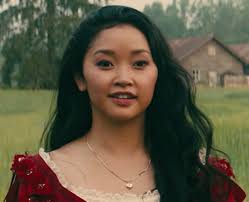Now that #OscarsSoWhite feels like a long forgotten relic, it seems as if Hollywood has become a wide, wonderful world of diversity. Unfortunately, all is not as it seems.
While films today appear to be opening the gates for more actors of color, the attention almost always returns to white cast members. It feels like almost every time a new movie or show boasts a diverse cast, the marketing, advertising, and media attention always goes to the white people—more specifically, the white males.
After the 2017 Academy Awards, the media attention was shifted towards how gracious the crew of “La La Land” was for handing over the award for Best Picture to “Moonlight,” almost as if the film was not the rightful award winner in the first place. The narrative became about white graciousness instead of the impact of a black queer drama brought into the cultural limelight.
Something about Hollywood encouraged by American society makes it so difficult to accept diversity without a story getting watered down to white taste. Every film about slavery has at least one white plantation owner that is “nice.” Every Civil Rights movie has a white character that is speaking up for—and absolutely, definitely never over—their newfound black friends. In every case, it becomes about the white savior.
This is what TV Tropes, a pop culture media analysis organization, calls the “White Male Lead.”
The White Male Lead proves that no matter how innovative, inclusive, and diverse a film claims to be, the focus always falls on the heterosexual white man. Even in films that follow the story of a main character belonging to a minority group, if there is a white male present, whom is not the villain, he will likely be considered the real hero of the film.
Take for example the Netflix movie “To All the Boys I’ve Loved Before.” It is a heartwarming romantic comedy with an Asian-American girl as the center of the narrative. Obviously, this is a massive game changer for the way Hollywood views their female romantic leads. The main actress, Lana Condor, must be getting a significant amount of attention, but not exactly.
Almost immediately after the release of the film, the internet began to gush and rave over the newest heartthrob, the white co-star Noah Centineo.
Despite being the star of the movie, Condor has received only a small piece of the media hype compared to her white male counterpart. Centineo is now getting roles with far more weight and significance than that of Condor, especially with the recent announcement of his involvement in the new “Charlie’s Angels” movie.
According to the U.S. Census Bureau, almost 40 percent of the American population is non-white and 50.8 percent of the population is female. Yet the 2018 Hollywood Diversity Report from University of California, Los Angeles found that as of 2016, only 13.9 percent of lead roles in films were actors of color and only 31.2 percent were female.
With films that boast about diverse acting choices, such as “To All the Boys I’ve Loved Before” and the recent “Star Wars” flicks, it is easy to overlook that in the end, the media is still swaying towards the white male actors. While these works are a huge leap forward in terms of increasing diversity in film, Hollywood does not deserve brownie points for doing the bare minimum.





![[Both photos courtesy of sonoma.edu]
Ming-Ting Mike Lee stepped in as the new SSU president following Sakakis resignation in July 2022](https://sonomastatestar.com/wp-content/uploads/2024/04/CC4520AB-22A7-41B2-9F6F-2A2D5F76A28C-1200x1200.jpeg)


























